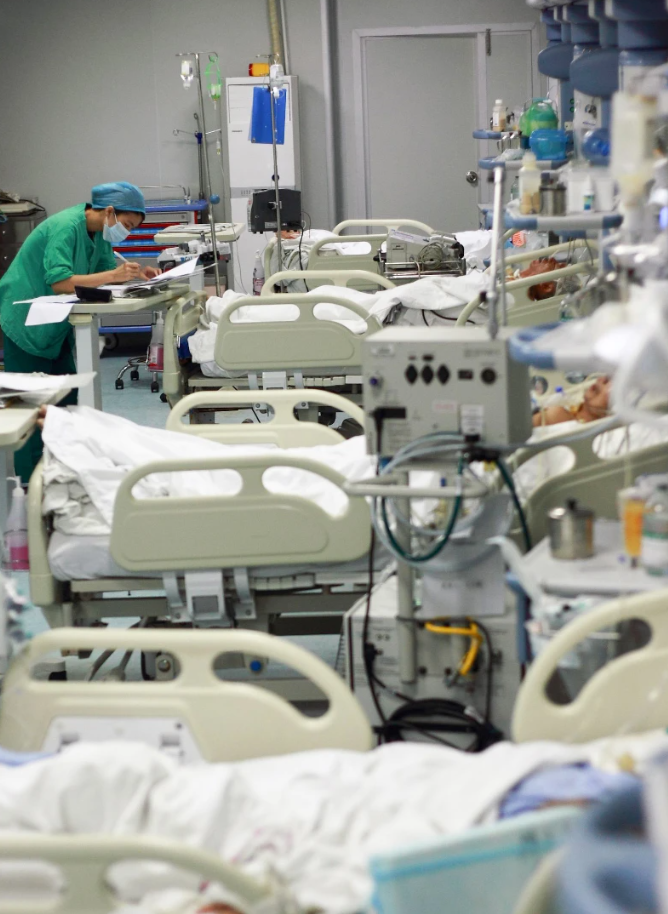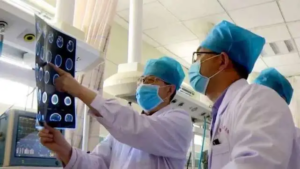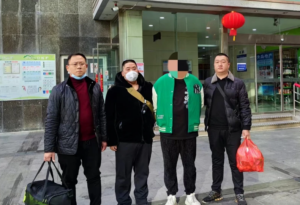
ICU at this Sanya hospital: multiple initiatives to ensure efficient turnover of critical care beds
In the past few days, Sanya People’s Hospital丨Sichuan University Huaxi Sanya Hospital has shifted its focus from “preventing infection” to “protecting health and preventing serious illness” according to the work plan. The medical staff of the Department of Critical Care Medicine took up the responsibility of safeguarding people’s life and health with practical actions to protect the bottom line of life for the public.
On January 17, the morning shift was over, but Dr. Gao Qingbao, who had been on the night shift for more than 10 hours, was still busy in the ward, observing patients, issuing medical orders, and communicating with patients. …… When he was free to sit down and write the medical records, he still got up from time to time to check the situation in the ward, afraid of missing the changes of patients’ signs.

Sanya People’s Hospital丨Sichuan University Huaxi Sanya Hospital’s medical staff at work in the ICU.
There was an 82-year-old man in the ward who suffered from new crown and showed symptoms such as weakness, high fever, cough and sputum. The night before, he was rushed to the intensive care unit for sudden onset of respiratory distress, decreasing oxygen saturation and unconsciousness. After a night of efforts by Gao Qingbao and his colleagues, they nebulized and dispelled sputum for the old man, and strengthened anti-infection, anti-virus and anticoagulation treatment, the old man slowly woke up.
During the next treatment, the old man’s spirit improved significantly, he gradually resumed eating, and his blood oxygen saturation rose to 100%. On the fourth day, he was transferred out of the intensive care unit and into the specialized respiratory medicine department to continue further treatment.
“Because critically ill patients need medical equipment to support life, basically each patient is attached to three tubes, and we have to ensure that the tubes are open, but also to ensure the patient’s comfort and to prevent pressure sores and observe whether the hemodynamics are stable.” Chen Jie, the head nurse, pointed out that even under a tight manpower situation, care still has to be done carefully and well, which requires a lot of time and energy.

Doctors discussing treatment options.
In order to speed up the turnover of beds and allow patients to receive timely and effective treatment, the hospital management discussed and deployed a “hospital-wide strategy” to fully coordinate the deployment of human resources, ward beds and medical supplies. The Department of Critical Care Medicine is in full swing. They treat the sickest patients, and after careful monitoring, the patients’ conditions improve and are evaluated by experts and transferred to the corresponding disciplines for further treatment within the shortest time.
The hospital has introduced various measures to protect the work of the diagnosis and treatment of seriously ill patients, without the support of the leading hospital, West China Hospital of Sichuan University. Among them, Professor Zhong Xi from West China Hospital, who is stationed at the hospital’s Department of Critical Care Medicine, joins the expert team for the treatment of acute and critically ill patients, and conducts hospital-wide multidisciplinary (MDT) consultations or joint remote consultations with West China Hospital on a daily basis to make specific recommendations on the next treatment plan, so as to ensure that critically ill patients are treated accurately and effectively, and to ensure the efficient turnover of critical care beds.


Average Rating